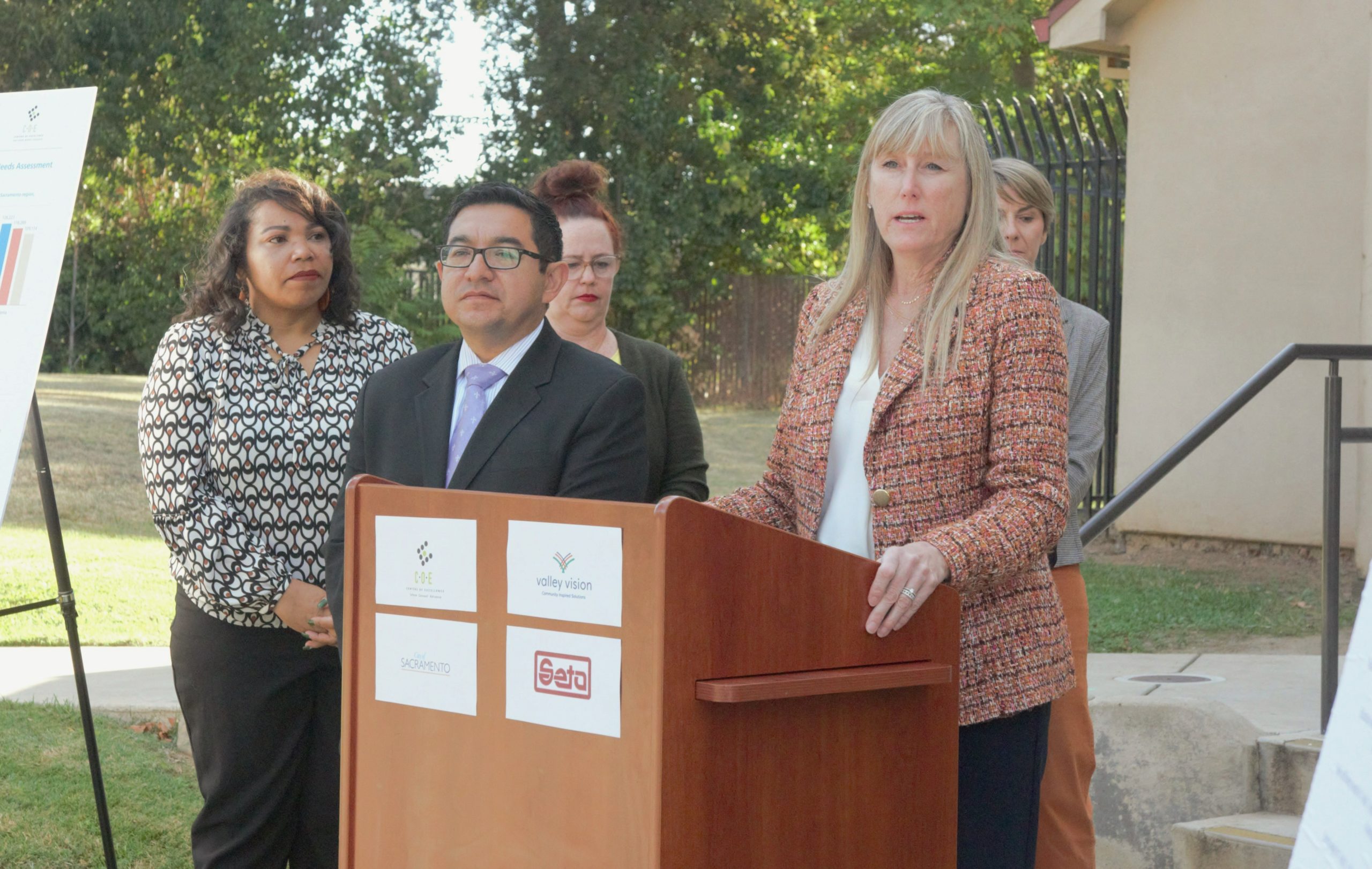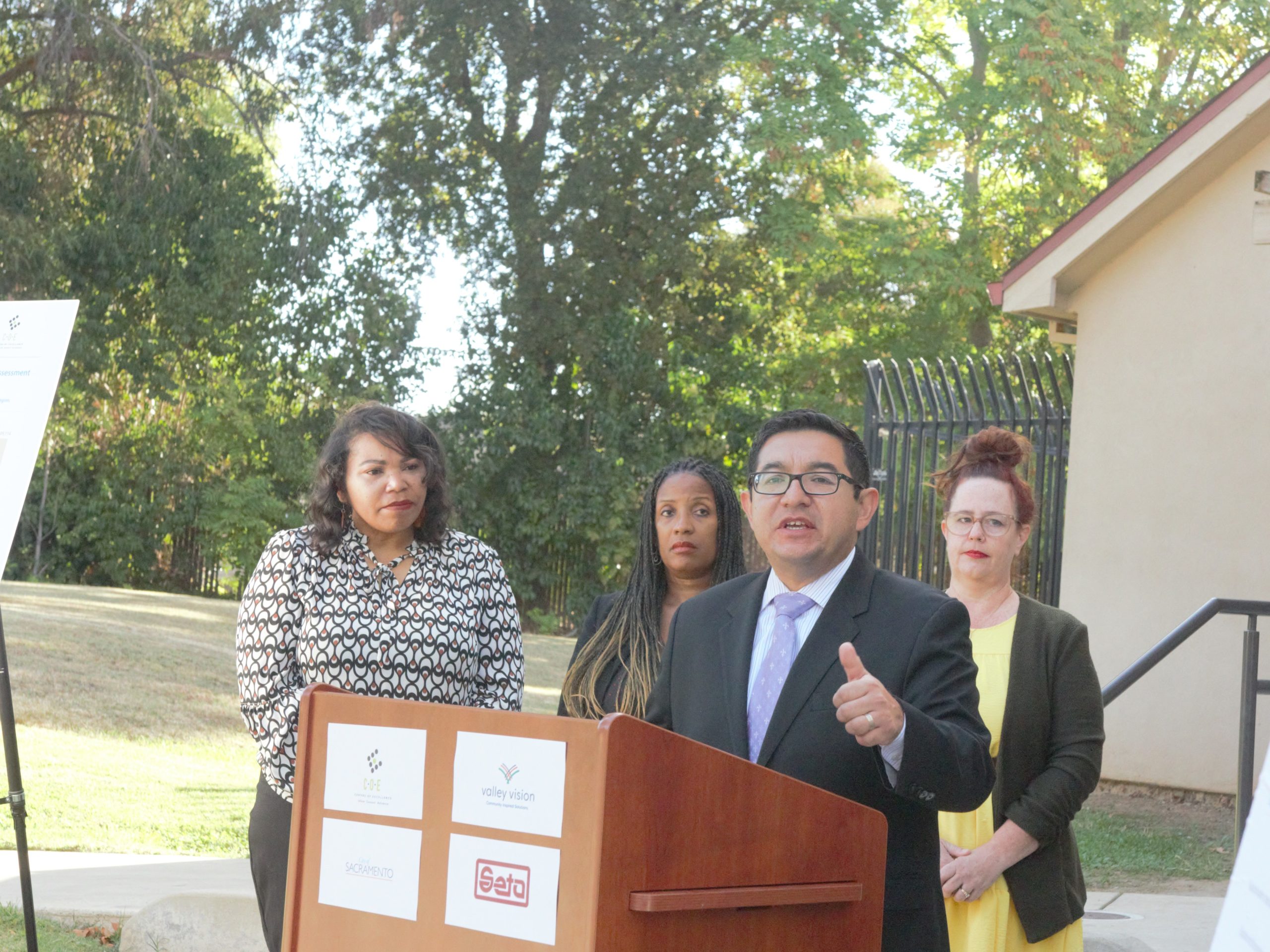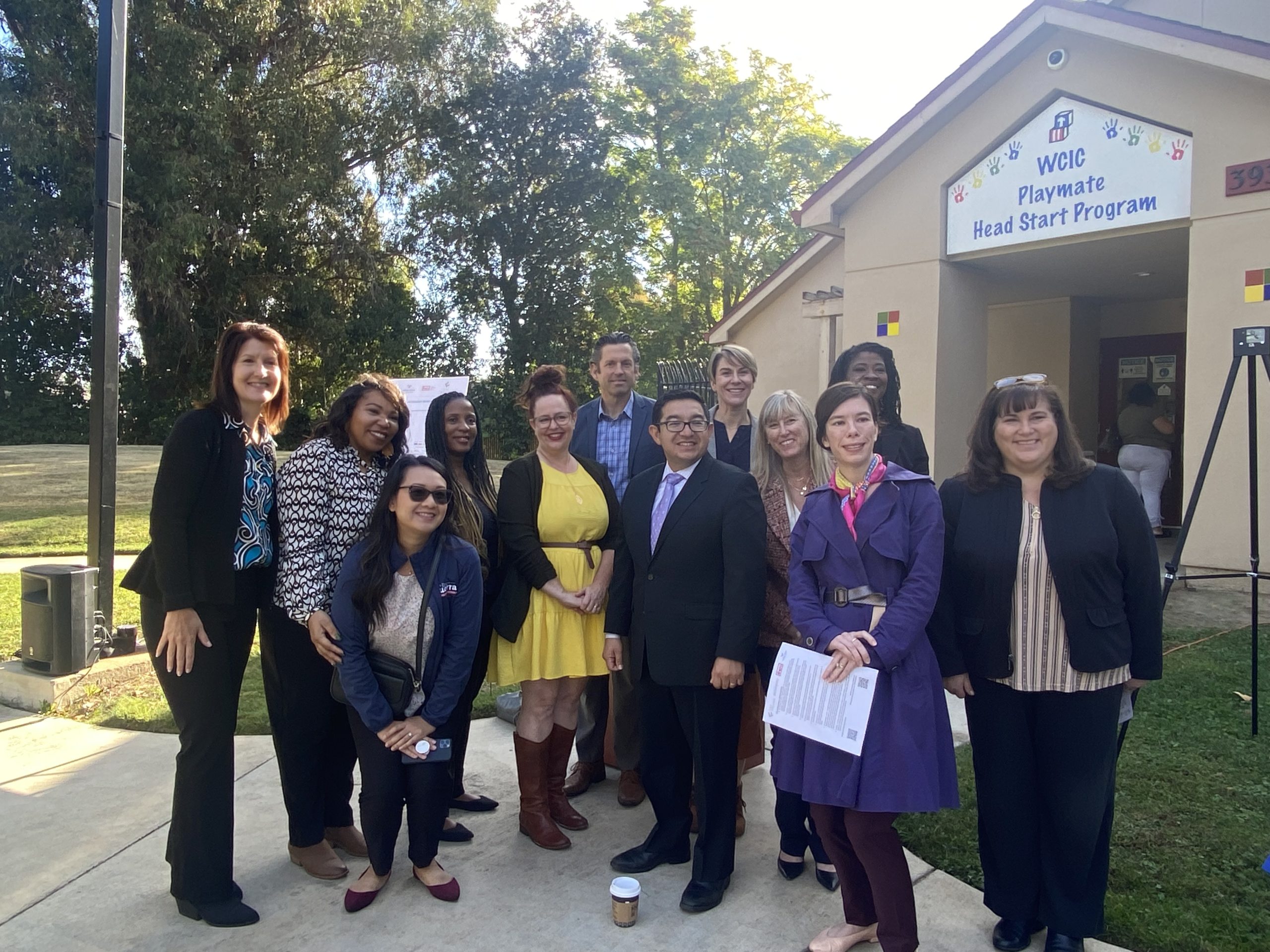Shortages in Early Childhood Education
New report underscores employment solutions to improve job quality and working conditions
Sacramento, CA – October 26, 2022: Valley Vision and the Greater Sacramento region Center of Excellence released an Early Childhood Education (ECE) Workforce Needs Assessment report detailing capacity and workforce challenges facing the Greater Sacramento Region. This report builds upon the work of the Early Learning and Child Care Taskforce which was created at the direction of Mayor Pro Tem and Chair of the Sacramento Employment and Training Agency Eric Guerra, to develop recommendations to improve access to affordable and quality child care and increase access to career pathways in early childhood education and child care.
The report details a chronic workforce shortage with child care licensed capacity unable to keep up with demand. In Sacramento County, the number of licensed spaces only accounts for one out of every three children aged 0 to 5 years old. A large majority of licensed spaces (88.5% of total capacity) in child care centers in Sacramento County are for preschool-age children, with only 11.5% designated for infants. In addition, the impact of Transitional Kindergarten (TK) will play a significant role in exacerbating the early child care education workforce shortage by increasing overall demand, and creating a need to backfill positions from the existing workforce who may fill these positions.
Denise Lee, Interim Executive Director of the Sacramento Employment and Training Agency (SETA) that administers Head Start for Sacramento County shares: “The challenges outlined in this report are on point with what child care employers, like Head Start, are facing each day. The significant staffing shortages continue to hinder child care providers’ ability to expand service locations to meet demand; to lengthen operational hours for working families; and/or to keep centers/classrooms open on a daily basis so families are not scrambling with little notice. The crisis is real. However, so are the solutions. What is most valuable about this report is a set of recommendations that are actionable by key stakeholders in our community, including SETA.”

Child care workers and preschool teachers make well below a living wage in the Greater Sacramento Region. Currently the living wage for a one adult and one child household in the region is $37.27. The report found that child care workers in Sacramento County make one third of the living wage with a median wage of $13.74. It identified that preschool teachers’ make less than half of the living wage, with median hourly earnings of $16.68.
Mayor Pro Tem Guerra emphasizes, “Parents are struggling to find child care, year long waitlists prevent parents from returning to the workforce. At the core of our child care crisis is a shortage of early learning and child care workers, we must invest in child care workforce pipelines to ensure we have enough child care workers to meet the child care demands of our ever changing economic climate and needs of our families.”
Concurrent with results from Valley Vision’s recent Livability Poll, CEO Evan Schmidt explains, “Low wages continue to be a top concern of residents and impact the ability to afford basic needs, such as food and housing. Industries with chronic low wages are particularly concerning, especially when dominated by women workers of color who have historically seen significant wage gaps.”

The report also found inequities in demographic representation across the ECE workforce, with 70% of child care workers and teachers coming from non-white backgrounds, predominantly Latina. Nonwhite groups were underrepresented in supervisory positions within the industry (40%). Additionally, 80% of the family child care home workforce and 52% of center teachers are age 40 and older, making retirements a concerning threat and strategies to attract younger workers more important.
The report sets forth recommendations to address our region’s critical early childhood education workforce shortage. “High quality early childhood education is a crucial support for young children, yet this report shows how we are not meeting the needs of our region. The report, through its findings and recommendations, makes clear that we need to both address job quality and working conditions alongside expanding educational pathways and professional development for child care workers,” shared Kevin Ferreira van Leer, Associate Professor of Child and Adolescent Development at Sac State.
Valley Vision is hosting a virtual conversation that will include a deeper dive into this topic on December 6th from 12:30 – 2:00 PM. This event will include a presentation of key findings and recommendations from the recently released report and a panel discussion to including representatives from Head Start, Sacramento County Office of Education, City of Sacramento, Sacramento State’s College of Education, and others.
###
Media Contact: Priya Kumar priya.kumar@valleyvision.org (707) 386-8501
About the Report: The City of Sacramento and the Sacramento Employment and Training Agency (SETA) convened the Early Learning and Child Care Task Force to coordinate efforts and address issues in the ECE industry. A working group within the task force commissioned the Center of Excellence for the Greater Sacramento region and Valley Vision to undertake a study that illuminates major issues facing the early childhood education workforce in Sacramento County and the Sacramento region. The report complements data and recommendations provided by the 2017 Sacramento County Board of Education Early Learning Road Map, and the 2019 City of Sacramento Strategic Plan to Increase Access to child care and Early Learning.
About Valley Vision: For more than 25 years Valley Vision has used research to help governments, businesses, foundations and community groups better understand the issues facing our region. We believe that knowing and understanding the facts is the best way to establish a common working foundation for collaborative problem-solving. To that end, Valley Vision conducts, produces and interprets research including scientific public opinion polls, focus groups, community needs assessments, best practice studies and other research tools to bring to light the information local leaders need to improve our communities.
About Centers of Excellence: The Centers of Excellence (COE) for Labor Market Research deliver regional workforce research and technical expertise to California community colleges for program decision making and resource development. The Centers of Excellence Initiative is funded in part by the Chancellor’s Office, California Community Colleges, Economic and Workforce Development Program. The Centers aspire to be the leading source of regional workforce information and insight for California community colleges.
